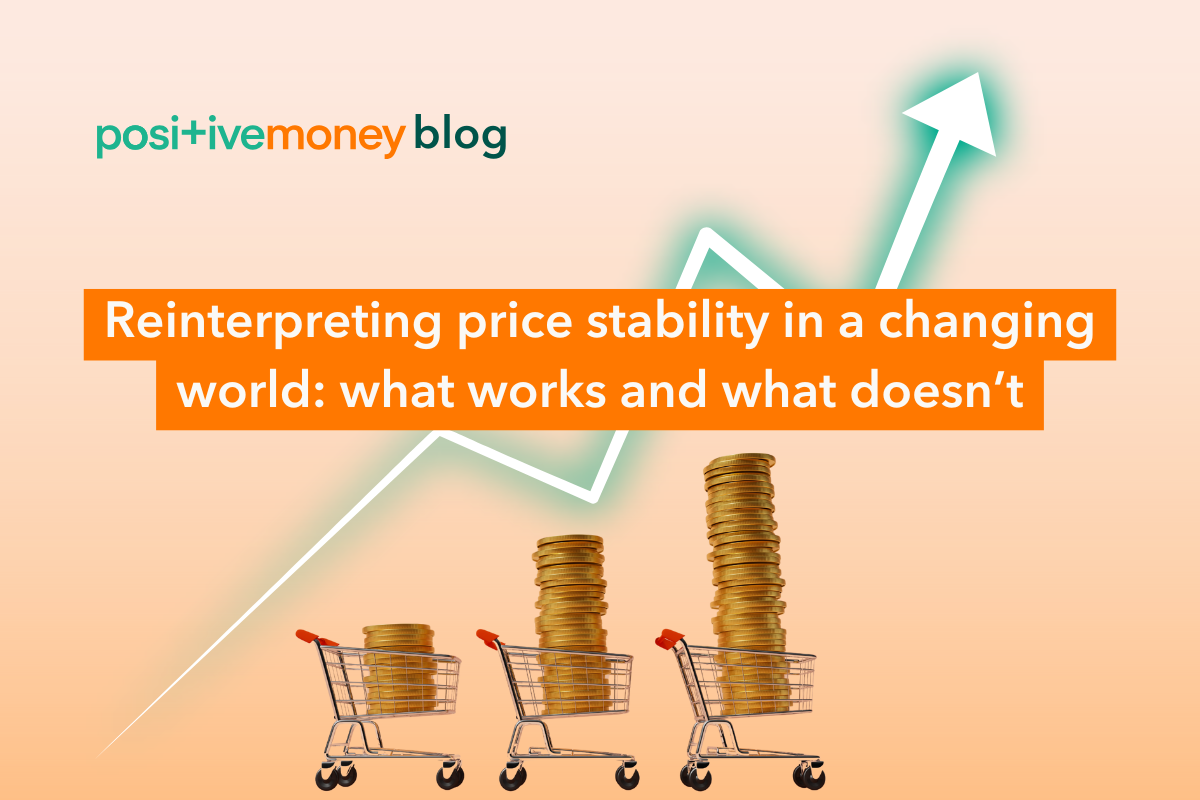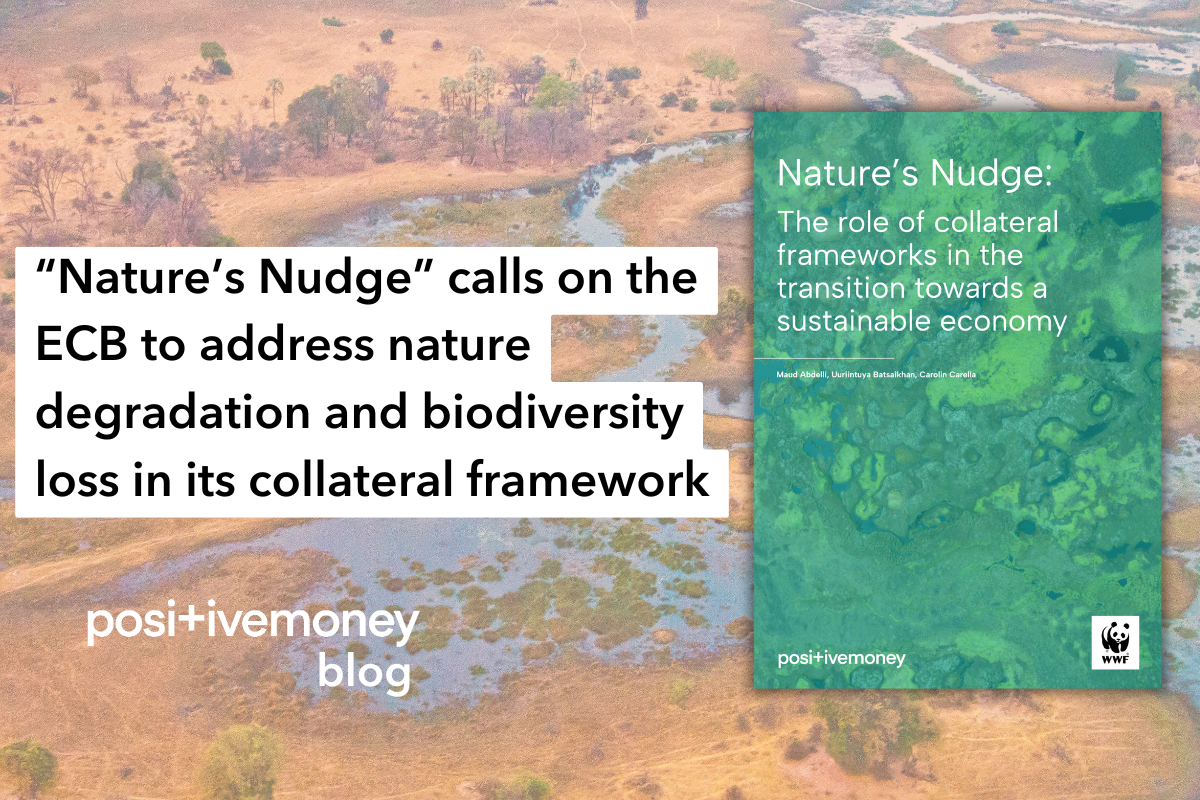
MacroeconomicsEU
18 December 2025
Is the European Central Bank ready to expand its focus beyond climate risks to tackle biodiversity loss and ecosystem collapse?
The report, Nature’s Nudge: The role of collateral frameworks in the transition towards a sustainable economy, produced in collaboration with WWF’s Greening Financial Regulation Initiative, calls on the European Central Bank (ECB) to expand its focus beyond climate risks to tackle a critical, but often overlooked, threat: biodiversity loss and ecosystem collapse. Our findings show that in France alone, the food and beverage sector is responsible for significant damage, affecting freshwater ecosystems equivalent to the size of Majorca and degrading land larger than Croatia.
The ECB has begun to integrate climate and environmental risks into its operations, including through its collateral framework. This framework allows banks to borrow from the ECB by offering financial assets – like bonds – as collateral, much like a homeowner offering their property to secure a mortgage. By determining which assets are accepted, the ECB holds an enormous influence over the financial system, shaping the behaviour of banks and market participants.
However, the ECB's focus has, so far, been limited mostly to climate risks. While addressing climate change is crucial, it’s only part of a larger environmental crisis. Our report highlights the urgent need for the ECB also to confront biodiversity loss and ecosystem collapse, which are increasingly intertwined with financial stability. Ignoring these risks could have severe consequences for the entire financial system.
The ECB itself has acknowledged that environmental damage, like climate change, can impact price and financial stability. For instance, soil erosion and the loss of pollinators could harm farming, drive up food prices, lower land values, and shrink farmers' income. This would inevitably impact banks lending to these sectors, creating ripple effects throughout the economy.
The ECB analysis shows that just 10 banks in the euro area are responsible for financing 40% of global biodiversity loss, while the top 100 banks account for 90%.
The combined impact of climate change and ecosystem degradation is likely to create the greatest risks for euro area banks. For example, sectors dependent on water in southern Europe are expected to face extreme drought risks by 2030-2040. The ECB projects that if the current trajectory of emissions and environmental damage continues, losses for euro area banks could be nearly three times higher than in a sustainable, ‘Paris-aligned’ scenario.
Despite these alarming trends, the ECB’s collateral framework still allows approximately €250 billion in high-carbon assets. Stronger action is urgently needed to protect financial stability and promote a sustainable economy.
France presents a clear case of why action is needed. As a leading green central bank, the Banque de France has developed a rigorous internal risk assessment system, and our report uses a company in the food and beverage sector as a case study to highlight the risks at hand.
This company relies heavily on freshwater, making it highly vulnerable to climate change and biodiversity loss – problems to which it actively contributes. Extreme weather, soil degradation, and increasing water scarcity are severely disrupting its operations, while its activities further damage ecosystems. As mentioned, the food and beverage sector as a whole has already degraded land equivalent to an area greater than Croatia and freshwater ecosystems the size of the island of Majorca, showing its significant role in driving biodiversity loss.
We have outlined three key ways the ECB can adjust its collateral framework to address biodiversity risks:
Stricter asset criteria: The ECB should exclude assets from companies that significantly contribute to climate change and biodiversity loss, such as those heavily involved in deforestation or fossil fuel extraction.
Concentration limits: The ECB can limit how much high-carbon or environmentally harmful collateral banks can use, reducing their reliance on damaging entities.
Higher haircuts for harmful assets: By applying steeper “haircuts” (reductions in the accepted value of assets) to assets from environmentally damaging entities, the ECB can make it less attractive for banks to rely on these. For example, a €100 bond from a polluting company might only be valued at €80, encouraging banks to shift towards greener alternatives.
Adopting these reforms would reduce the ECB's exposure to environmental risks and send a strong message to the financial sector to align with green transition goals.
The latter half of 2024 will be a key moment. The ECB is expected to release findings on whether climate risks are adequately reflected in its collateral valuation system. Then, in mid-2025, the ECB is set to make a major strategic announcement regarding its Climate Action Roadmap, which could include key reforms to its collateral framework.
Our report must serve as a wake-up call for the ECB to broaden its approach and recognise the systemic risks posed by climate change as well as nature and biodiversity loss. By taking bold action now, the ECB can play a leading role in transitioning to a truly sustainable economy while safeguarding the stability of the whole financial system.
You can access the full report here.
